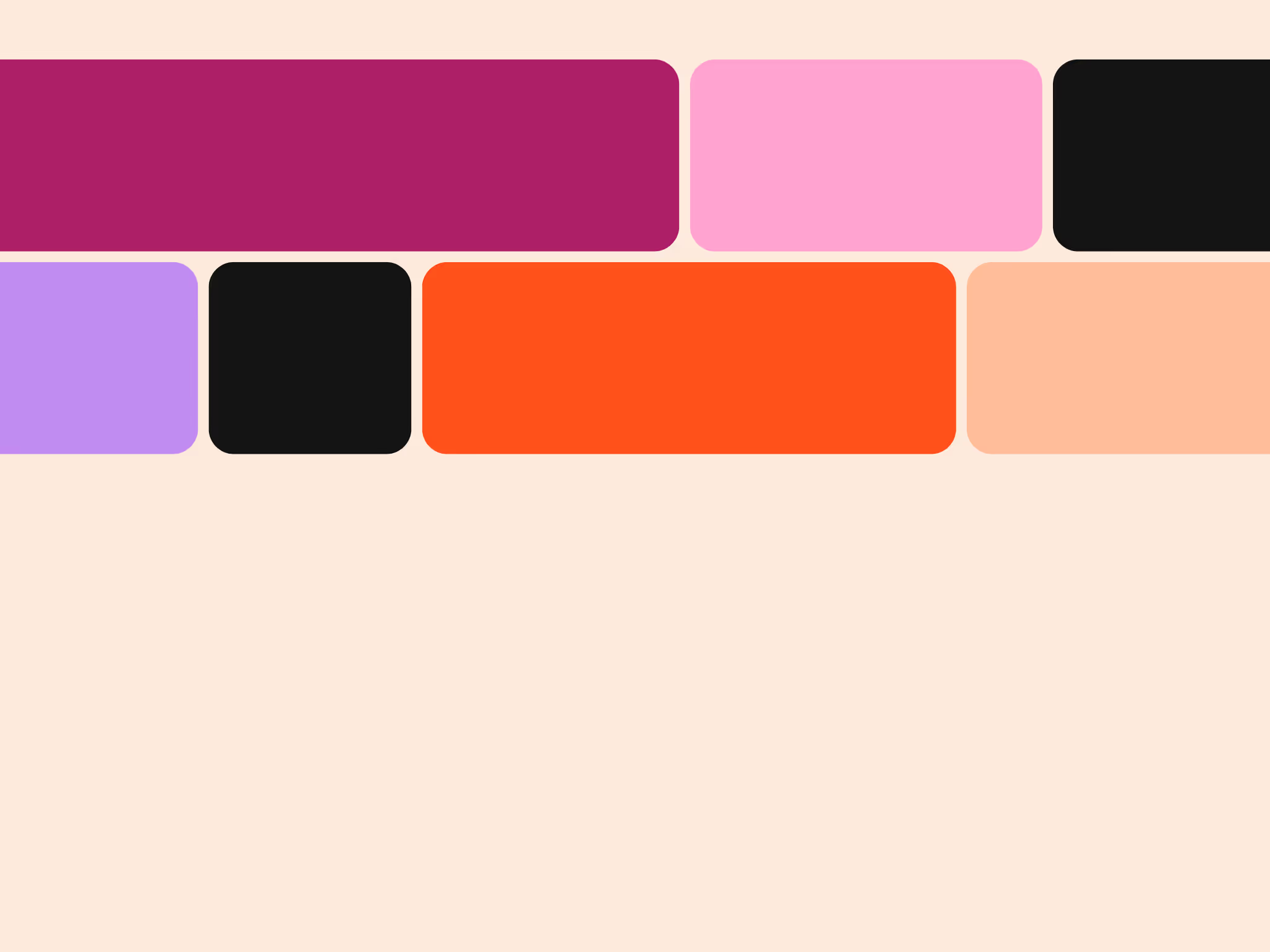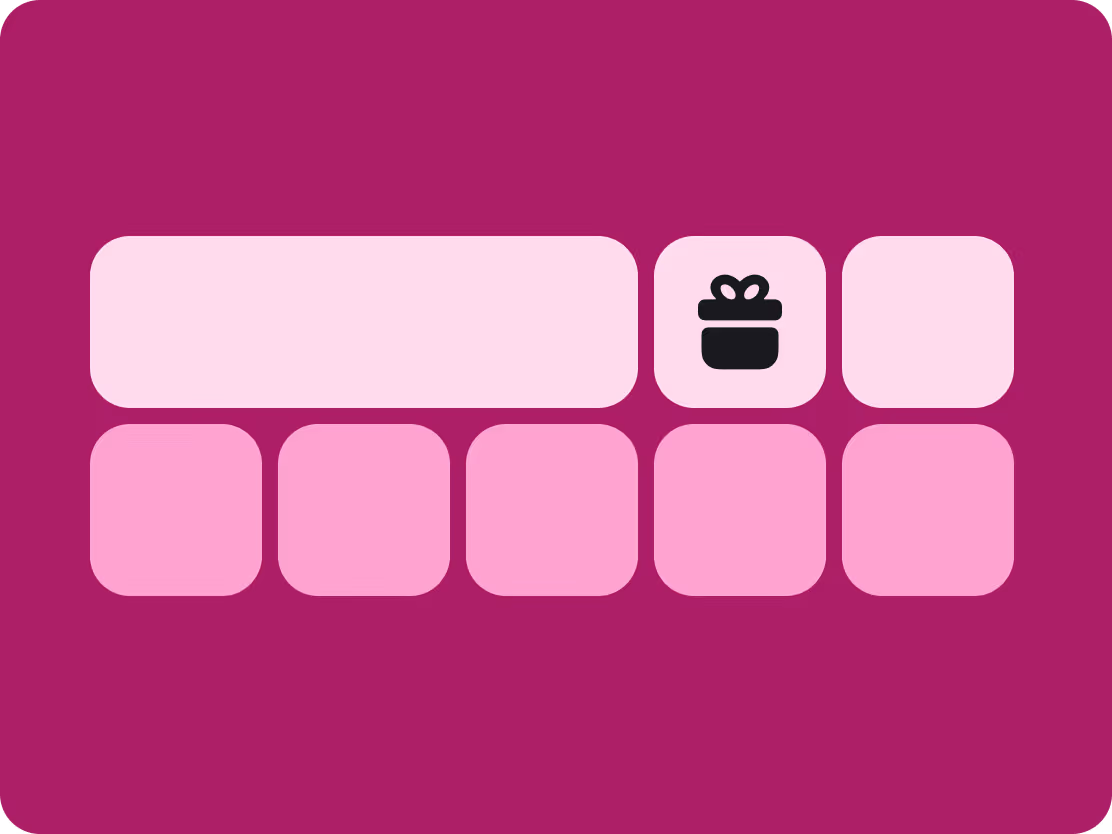Product seeding is when you give away your products to influencers for free. The collaboration could be, for example:
- An honest review post from the creator in return
- A review and an affiliate code for the creator’s audience
- No strings attached (the creator will post if they want to, for free)
Product seeding is an affordable way to boost brand awareness and get authentic influencer generated content you can repurpose for website & ad creatives. Sounds too good to be true? Here are ten brand examples that have an A+ influencer seeding game.
1: BURGA
BURGA turns everyday essentials — like phone cases, case covers, and laptop sleeves — into fashion accessories. They actively gift their products with an affiliate code.

Giving each creator partner a unique discount code makes creator performance easy to track. Rugile Paleviciute (Head of Global Partnerships) shared that Burga seeds over 500 creators monthly — resulting in around 800 – 1000 influencer posts.
While they target different niches and categories of influencers to tap into varying audiences, Rugile noticed it’s rare for a U.S. based creator with over 10K followers to agree to a seeding setup. Meanwhile, creators in Europe with over 20–30K followers can sometimes still be onboarded for a seeding campaign.
Variations in the market also exist when asking for a post in return. Rugile mentioned they practice seeding with two approaches, depending on the location:
- No-strings attached
- Asking for a post in return
In some countries, asking for X number of posts in seeding might be hard, while in others, it might be A-OK. That said, Rugile said a majority of the seeded creators end up posting about the products they were gifted.
In addition to location, Burga also uses Modash to filter for creators with at least a 1% engagement rate, relevant interests, age, and more.
What I also love about Burga’s seeding strategy is that they comment on the posts seeding posts of their creator partners.

It’s an excellent way to encourage your influencer partners, thank them for posting, and build a solid influencer relationship.
2: Regal Rose
Regal Rose is a jewelry brand selling detailed rings, necklaces, earrings, and more. They actively practice influencer gifting, with an affiliate code for each creator.
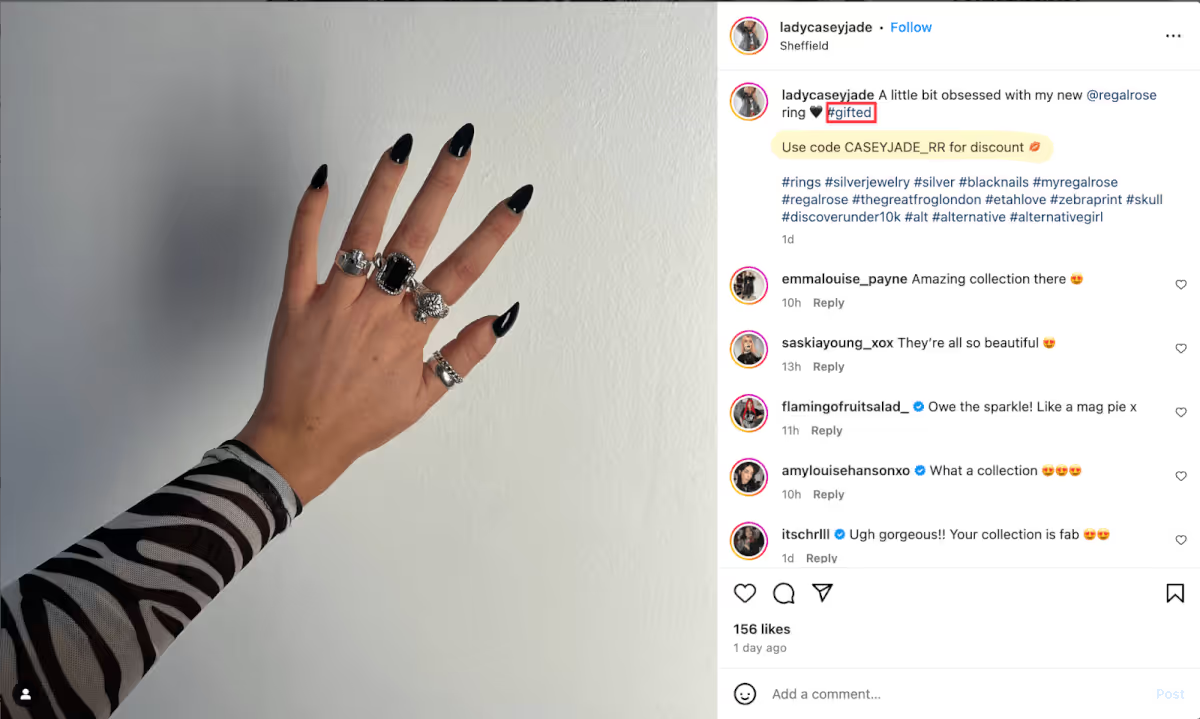
Regal Rose targets a variety of influencers when you look at the size of the creator. I noticed their seeding posts on the profiles of nano, micro, and mid-tier influencers. But what all influencers had in common was a certain “brand theme” — all the creator partners had content in line with Regal Rose’s dark and edgy vibe.
It’s clear product seeding has positive results for Regal Rose: many gifted posts had over 1k+ likes and several comments. The best part is Regal Rose’s products can fit in a ‘catalog of details’ post — which means they’re highly reusable. For example, Amy Stardust posted a get-ready-with-me type of content and included her Regal Rose code along with several other brands’ details.

This means many creators can post about Regal Rose’s gifted products multiple times rather than doing a one-off post — giving brand awareness an additional boost.
3: Hunter & Gather
Hunter & Gather sells food & supplements that are free from refined sugar and inflammatory seed oils without compromising on taste. They often share an affiliate code with a creator and ask for a detailed & honest review in return.
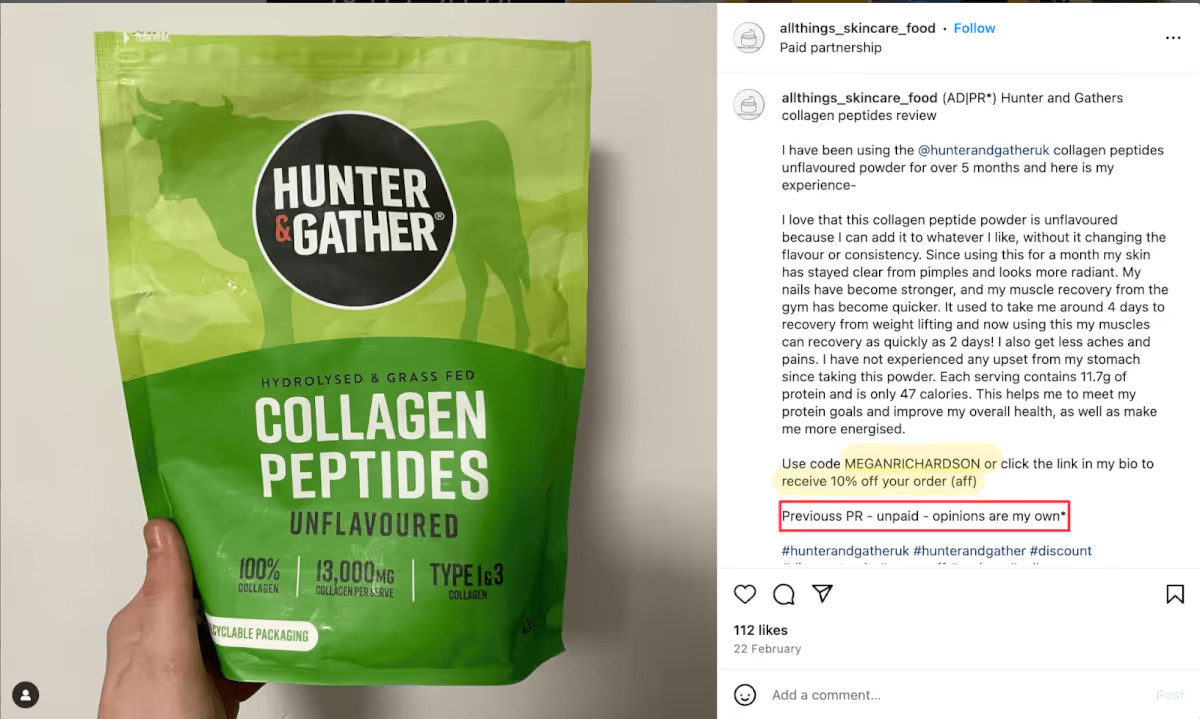
I spoke to Sambhav Chadha, co-founder of Augmentum Media, about how his company runs the seeding program at Hunter & Gather. They seeded 300 creators within six months and usually target creators with a minimum of 3K followers and a maximum of 100–150K. They also look at whether or not an influencer would be a strong brand advocate for their clients.
Sambhav highlighted that their overarching goal with product seeding is building influencer relationships on an anti-transactional model.
Hunter & Gather tracks KPIs in three parts, as Sambhav breaks down in his LinkedIn post. The three core KPIs they measure are:
- Reach
- Creatives obtained (for repurposing into ads, social media content, emails, websites, etc.)
- CPM
The company promotes the seeding relationship (if successful) into an affiliate one. The best-performing affiliates eventually become paid partners for Hunter & Gather.
How does Augmentum Media decide which products to seed?
- If there’s a newly launched product, they send that to create buzz around it
- Alternatively, if a brand’s goal is brand awareness over product awareness, they ask the influencers to take their pick from the product catalog
- If all products are around the same price point, the agency customizes and designs a personalized package with multiple merch (also depends on COGS)
- Or if a company wants awareness around a specific product, Augmetum Media keeps the product at the center and finds influencers whose audience might find it useful. For example, Hunter & Gather’s core influencer partners can be creators in the “health” niche. But since their collagen powder is a key ingredient for excellent skin health, they also gift their products to many skincare influencers — a great example of finding creators in adjacent niches to diversify and freshen up your influencer content.
Hunter & Gather is the poster child of authentic seeding content. None of the reviews creators post about them appear biased — they highlight the pros and cons in perfect balance. This builds the audience’s trust in the influencer and the brand. Win-win.
4: Pela Case
Pela Case sells compostable phone cases. In his Influencer Marketing Blueprint podcast episode, the co-founder & CEO, Matt Bertulli, described in detail how his company employs product seeding as a part of its influencer marketing strategy.
Pela Case practices product seeding with over 1,000 – 2,000 influencers monthly. They also take a “no strings attached” approach, so the creators are not obligated to post about the brand.
Matt says they specifically seed creators who reflect their brand values of eco-friendliness because targeting relevant creators is crucial for the company to improve their influencer marketing ROI.
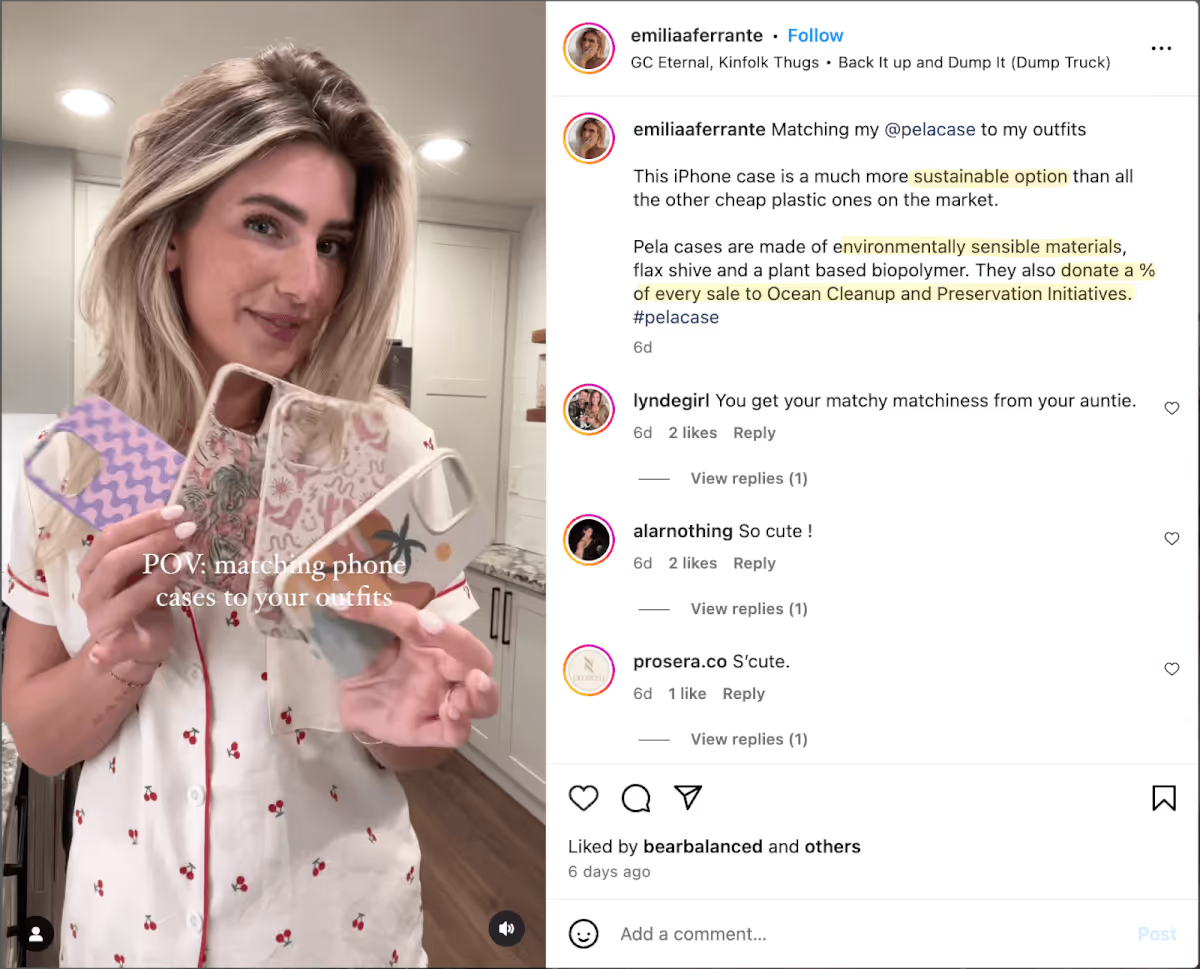
Matt also highlighted that Pela’s ad account has become more efficient since they scaled their seeding efforts. Why? Because the more people are posting about your brand on social media, the more targeted content the ad algorithm has to work with.
Pela extends the partnership into other collaboration types (I noticed paid, affiliate, and ambassadorship) for influencers who post excellent and high-performing content. From what I found, they mostly partner with nano and micro-influencers. Like Burga, they also reply to many creators posting content about them at no cost to engage them and build a strong creator-brand relationship.
5: Eva NYC
Eva NYC is a cruelty-free, vegan hair care brand. They have a #helloimeva creator community where influencers can apply to get Eva NYC’s products in exchange for creating content for the brand.
It’s a great example of creating a brand ambassador program with product seeding as your type of collaboration. The hashtag #helloimeva has almost 4k posts on Instagram. Using a hashtag makes the seeding posts easy to track.
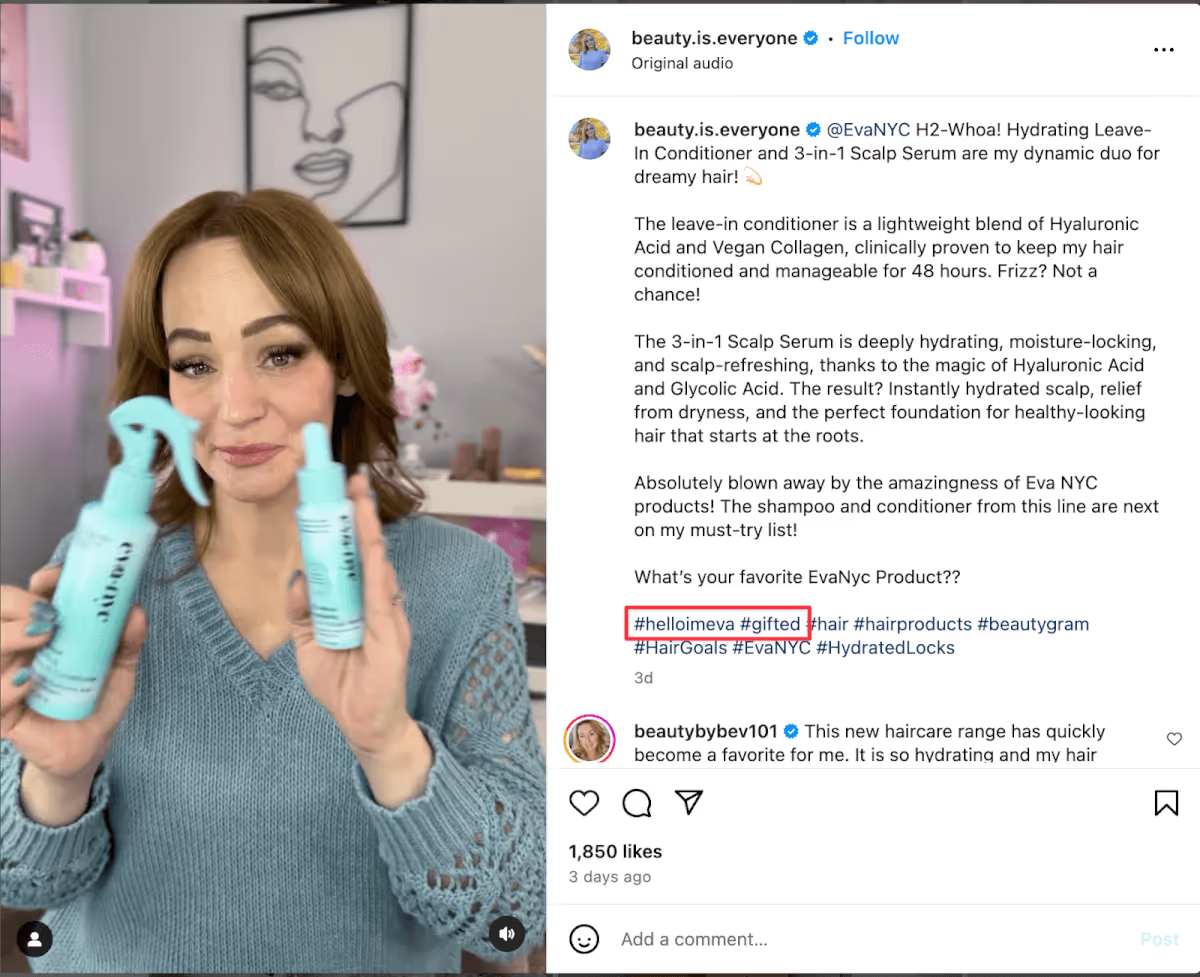
That said, I noticed multiple creators Eva gifted to (probably proactively) that don’t use the hashtag, but post about the brand anyway.
Eva NYC partners with influencers from various tiers. I found posts from nano, micro, and macro influencers. But all these creators have one thing in common: their niche. All seeded influencer partners are from the beauty sector — which perfectly fits Eva NYC’s product and brand.
I also noticed that Eva NYC practiced seeding much more aggressively for the launch of their new product line, H2-Whoa.
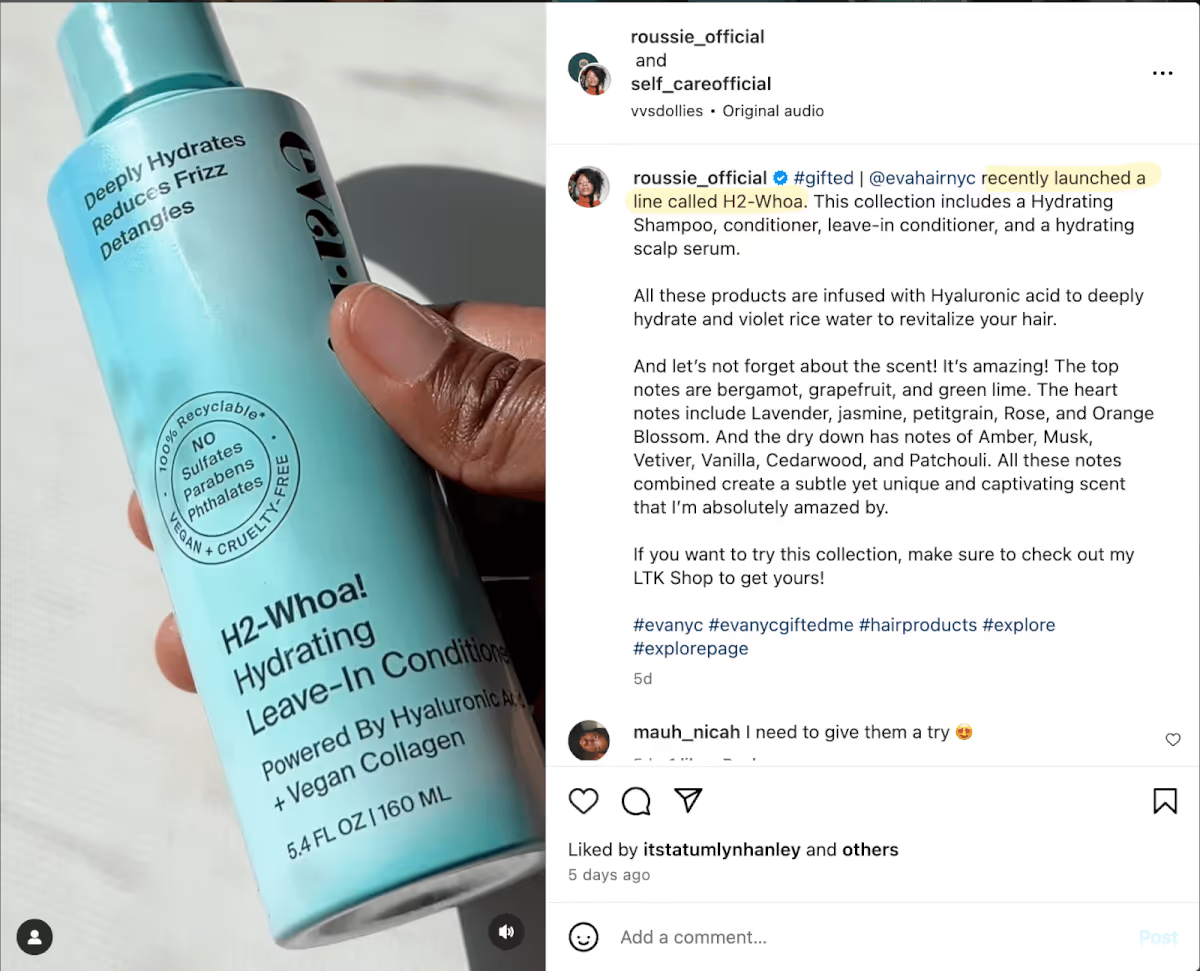
Scaling your seeding efforts during a product launch is an excellent tactic because it pumps brand awareness and spreads the word about your new launch.
6: Create Wellness
Create Wellness sells creatine gummies (a fitness supplement) to help people build lean muscle and increase strength. When they tapped into product seeding, they got an excellent response from creators excited to try their products.
According to their founder, Dan McCormick, they reached out to female fitness & wellness influencers with over 25K followers for their seeding efforts.
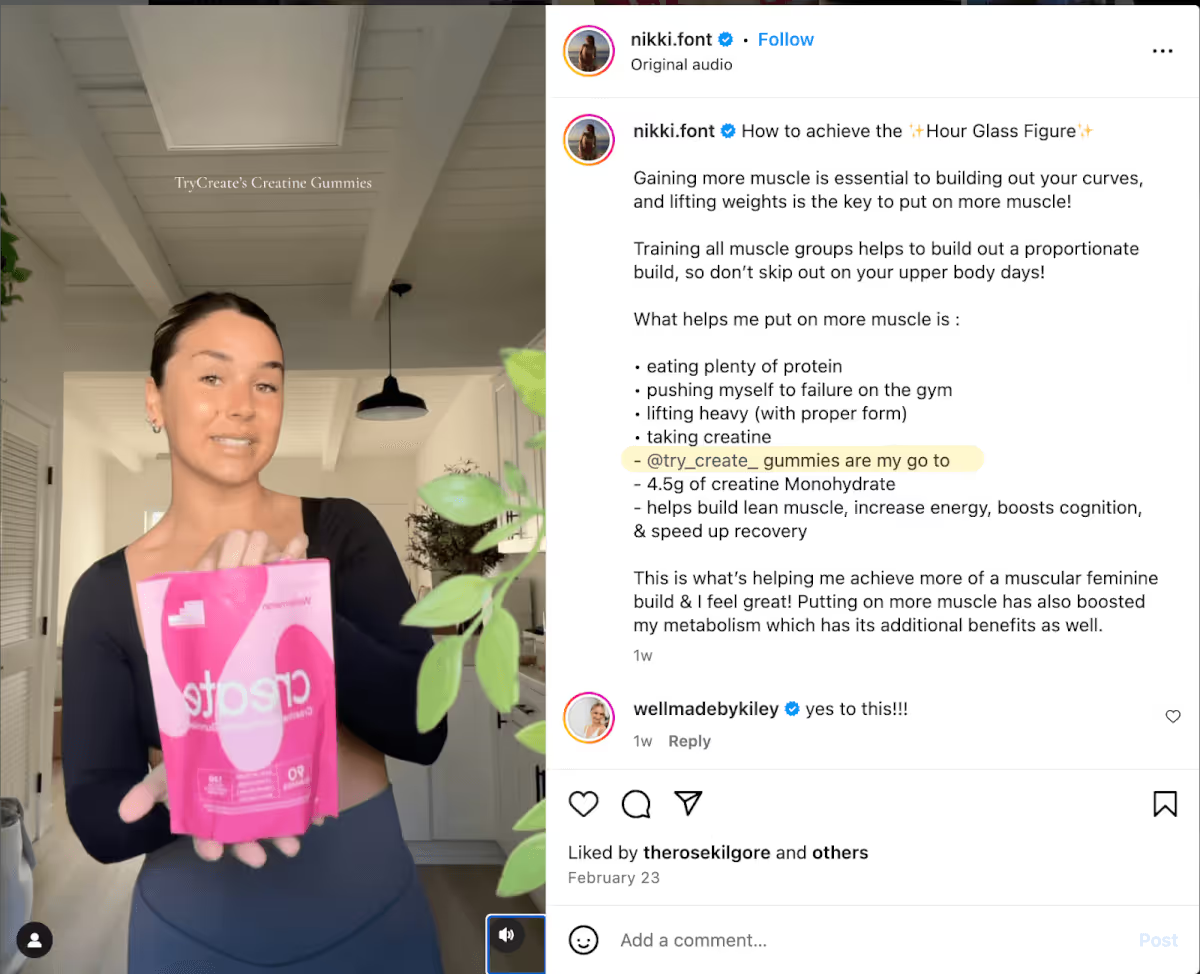
But I also noticed many male fitness influencers raving about Create’s gummies recently and some of them also shared a discount code.
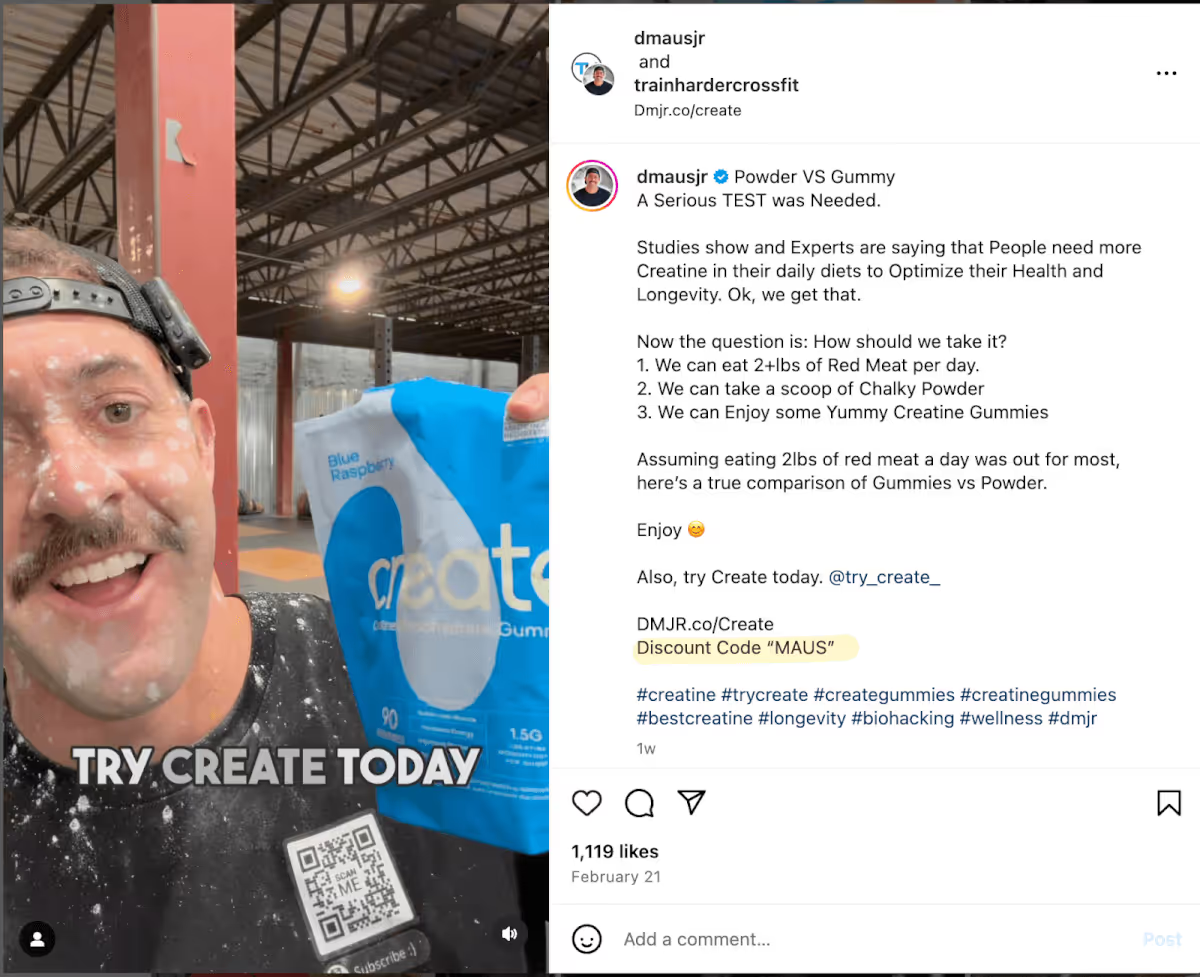
In his podcast episode with Kynship, the founder said seeding was a means to an end to build better influencer relationships. If a creator’s seeded content performed well, Create Wellness produced 2-3 high-quality UGC ads with the influencer. Eventually, Create Wellness used a cost-cap bid strategy on Meta.
Create Wellness’ influencer content has also led them to become one of Equinox’s top six nutrition brands.
7: Supergut
Supergut sells healthy prebiotic snacks like bars, shakes, and fiber mixes. According to Kynship’s case study, the company started practicing product seeding to lessen its customer acquisition cost, boost brand awareness, and increase sales.
They found relevant micro-influencers with a “health” niche or a busy lifestyle (like parents). To get into specifics, they looked at male and female creators between the ages of 25 and 40 in the United States. Kynship reached out to 1,000 micro-influencers, of which 345 agreed to collaborate. Out of them, 141 creators posted publicly about Supergut. (No strings attached product seeding approach.)
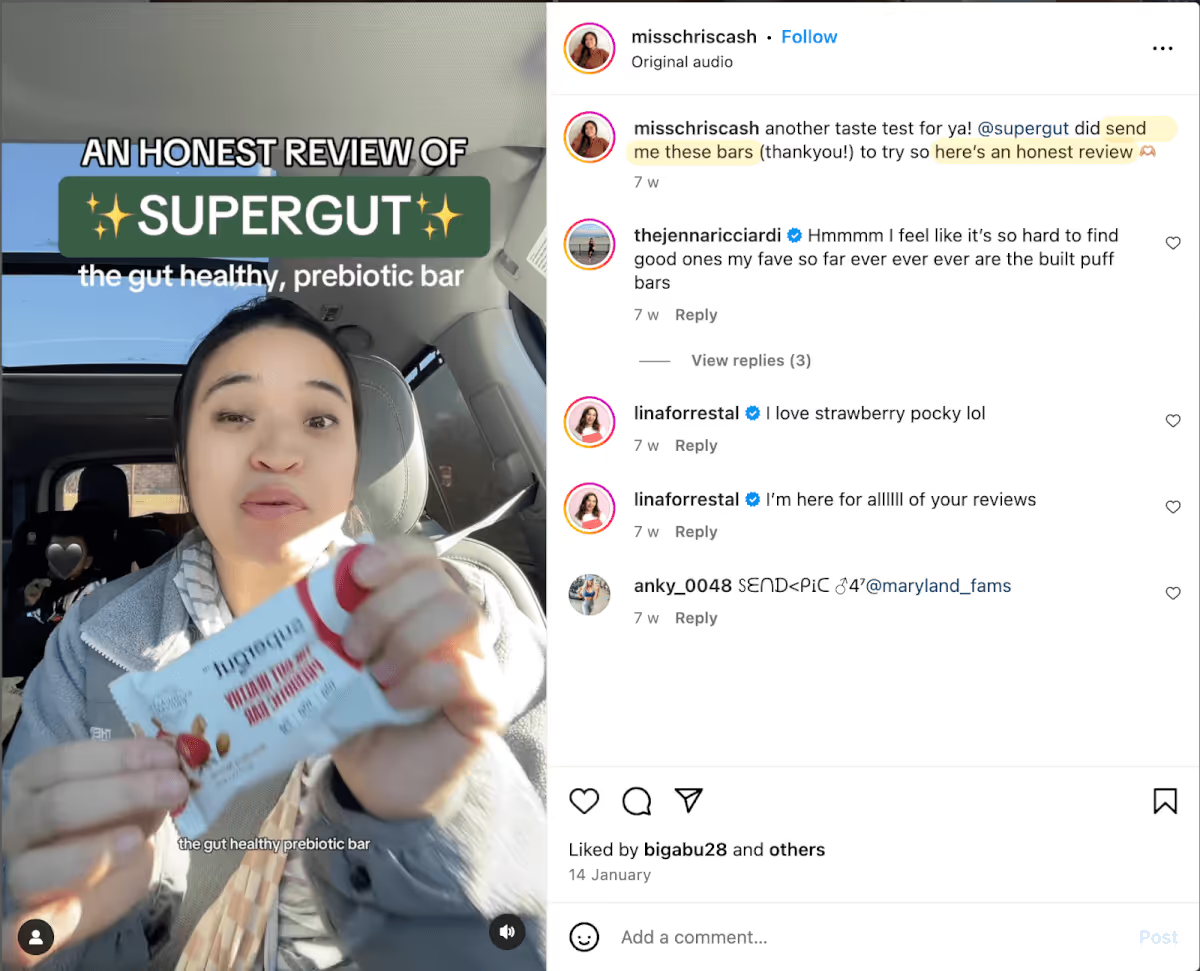
An often overlooked point to note: the number of influencer posts you can generate from product seeding isn’t necessarily equal to the number of creators who post about you. Why? Because if one influencer likes your product, they’ll post about it multiple times.
While 141 creators posted about Supergut, a total of 231 influencer content pieces went live. It included:
- 24 TikTok videos
- 231 Instagram Stories
- 9 Instagram Reels
- 10 Instagram feed posts

Supergut’s seeded content performed better than the brand creative in Meta’s paid media strategy. The total number of orders increased tenfold, and the customer acquisition cost witnessed a 24.96% cut.
Note: the ad spend was also increased by 635% to test hundreds of different assets.
8: Function of Beauty
Function of Beauty sells custom, clean, and vegan hair care products. They actively practice influencer gifting, paid partnerships, and affiliate marketing.
For gifting, they mostly target nano and micro skincare creators with a no strings attached approach.

What’s different about Function of Beauty though is they often target hyper-niche creators — like influencers who post about curly hair care — since their ideal consumer is someone with curly hair.
They also have a mature and holistic creator marketing program — they practice various collaboration types such as gifting, one-off paid collabs, and even long-term influencer partnerships with creators like Brittney Christine (I found her collab posts as old as March 2023).
9: Biotherm
Biotherm is a skincare company owned by L'Oréal. They practice influencer gifting with a variety of skincare influencers from different regions. (I saw posts from influencers in Spain, Germany, Canada, and more.)
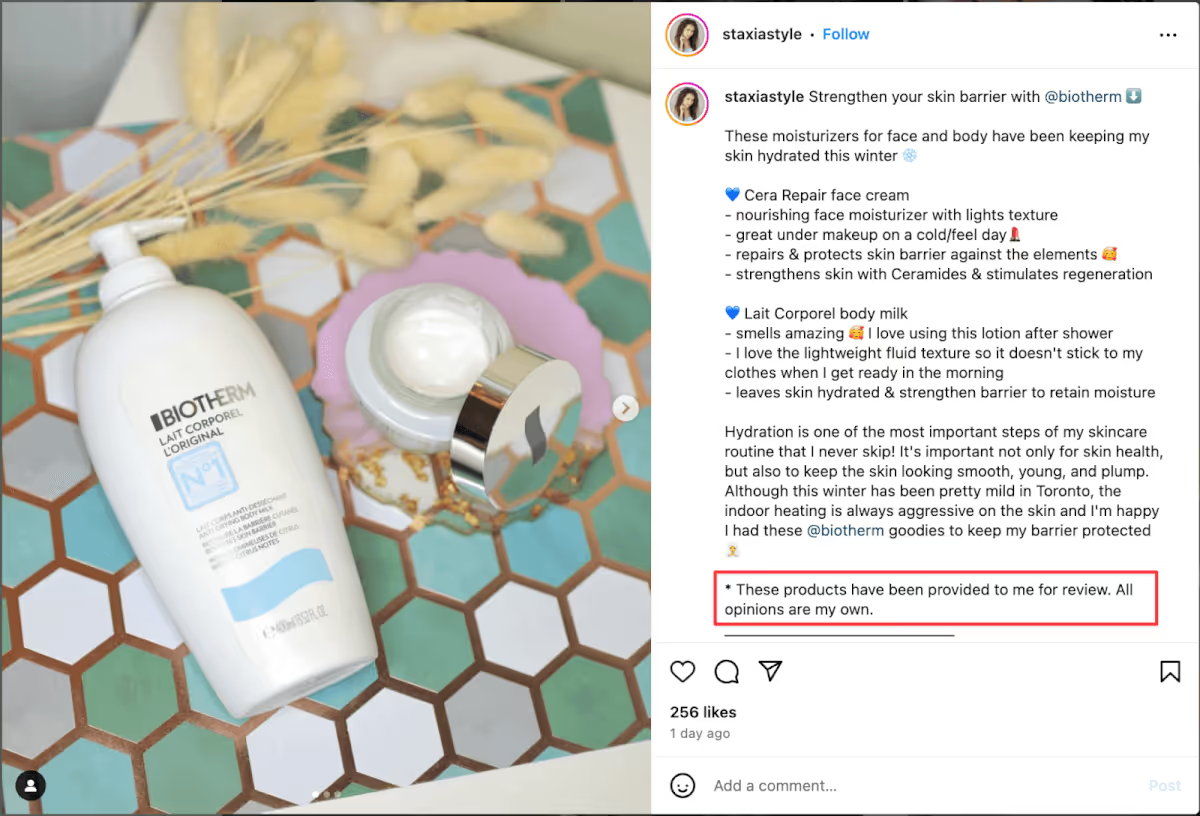
If you sell globally or are launching your products in a new market, getting influencers to post about you via seeding is an excellent way to generate buzz. Biotherm mostly gifted to nano and micro influencers with a strong skincare niche. This is a great tactic because it allows Biotherm to borrow the influencers’ trust and get exposed to a new audience.
They also couple their product seeding efforts with paid partnerships. For Canada, they’ve coupled their seeding efforts with an affiliate program where creators can sign up, create content for the brand, and win free products.
Quantity is where Biotherm shines: since L'Oréal backs Biotherm and is a popular name, a lot of creators post about their products — especially when they receive products for free.
In the past 24 hours alone, 47 creators tagged Biotherm’s Instagram account (and this doesn’t even include the posts that mention Biotherm without the tag!). Granted all posts aren’t high-quality, but there’s enough quantity to generate some excellent influencer content.
10: Willow By The Sea
Willow By The Sea sells organic skincare products for pregnancy, baby, and postpartum. Since their target customer is a mother, they gift their products to mom influencers.
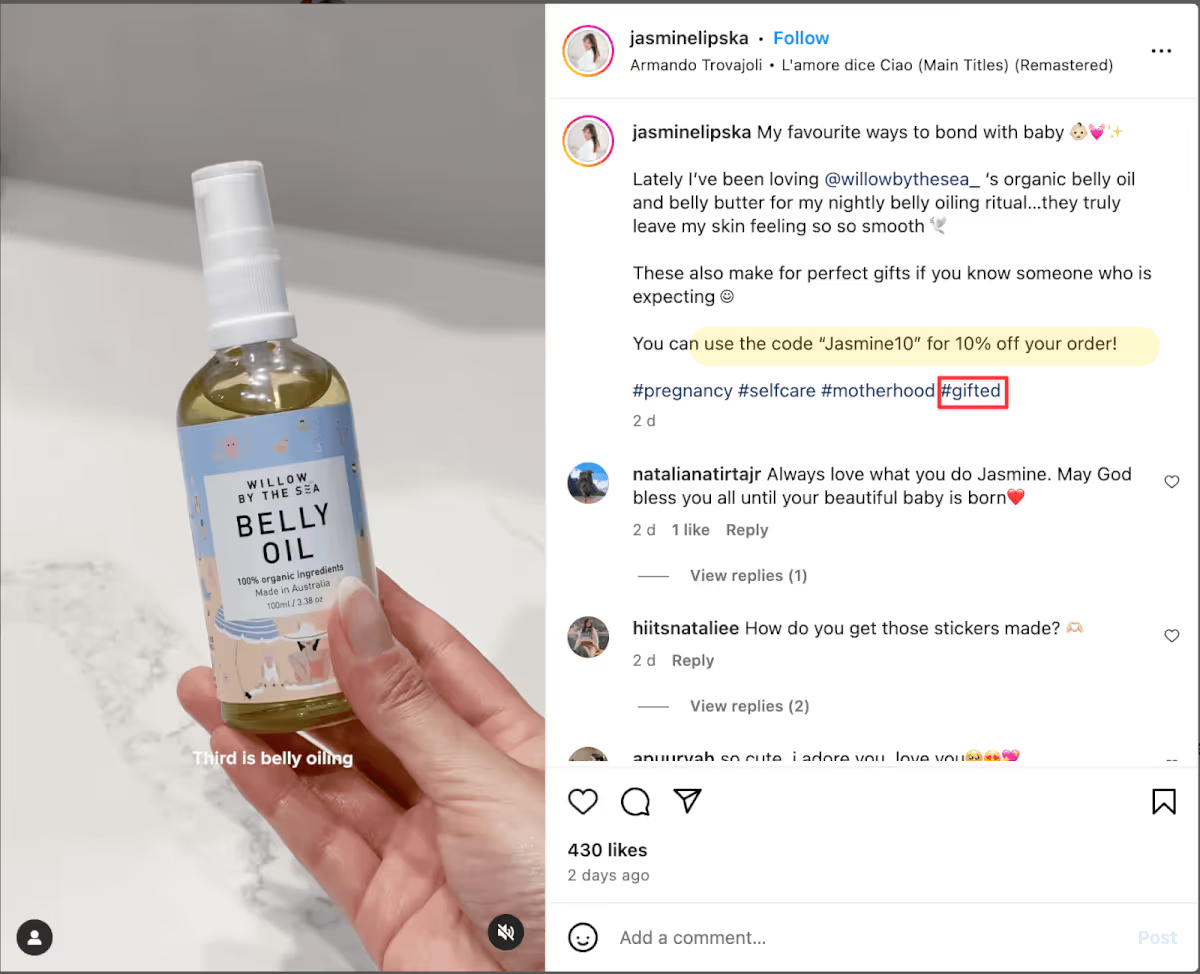
Almost all their influencers include a unique discount code to help their followers shop and enable the brand to track creator performance. Most of the creators who posted about them are nano and micro-influencers.
I loved that the captions of all the seeded influencers were authentic, personalized, and yet similar in their praise for the organic materials and fragrance. Each influencer partner highlights how they use the products and why they love them.
5 best practices for acing product seeding
Reading about the brands doing product seeding right is one thing. But what can we learn from them? Here are five actionable takeaways:
1: Follow-up with the ones who post (and thank them!)
It seems basic, but it’s often overlooked: thank the ones who post about you, measure their performance, and offer affiliate links/codes for their audience.
This helps the influencer who’s posted about you for free feel valued, heard, and appreciated. Plus: if you offer them a chance to earn a commission, they will post about you again.
You can also take this follow-up message as an opportunity to ask for honest feedback. Your influencers have a pulse on their audience (aka your target customers, if you’ve reached the right creators) — they can help you with valuable feedback about what they liked and didn't like about the product, packaging, and more.
2: Use an influencer discovery tool to find the right creators (and scale seeding)
Influencer discovery is everything when it comes to product seeding.
- If you outreach to a creator who’s a good fit, they’ll be excited to try your product at no cost and post about it.
- If you hit the wrong target, a creator might be offended if you ask for a collab post for free, even if you’re offering them products for zero bucks.
How do you find the right creators? Use an influencer search tool like Modash. It has every influencer on Planet Earth with over 1k+ followers on Instagram, TikTok, and YouTube. That’s over 250M+ creators! No limitations in the disguise of “vetted database” here. You can start by applying basic influencer and audience filters (1-2 at a time), like follower count, location, and audience demographics.

As you continue filtering and searching for influencers, you can also use Modash’s other filters, such as minimum engagement rates, follower growth rate, and more. You can even vet and analyze influencer profiles in-depth using the influencer analysis tool.

A tool like Modash can not only help you discover the right-fit creators, but also help you scale your seeding efforts. When you’ve developed the muscle and want to reach a higher gifting volume, Modash will make it a smooth ride.
A guarantee: your perfect influencer partners are present at Modash. All you have to do is some trial, error, and analysis to find them. Your first 14 days of Modash are on me. Give it a spin!
3: Set clear goals and KPIs to measure influencer seeding success
The easiest influencer marketing KPI to measure the success of your seeding efforts is the “number of live content pieces” from creators. But it doesn’t have to end there. You can add additional KPIs based on your goals with influencer seeding.
- If your goal with product seeding was to improve your creator response rate, track the number of positive replies on your total outreach messages.
- If product seeding was a means to an end, calculate how many creators move beyond the seeding stage to the affiliate/ambassadorship/retainer stage.
- If you practiced gifting to boost brand awareness, track the reach and engagement metrics of influencers who posted about you.
- If your ultimate goal is to use influencer marketing to improve the bottom line, track the number of sales you get through seeding (especially if you gave away affiliate links or codes). Compare this to the results from other types of creator partnerships and see which gets you the most conversions.
- Lastly, you can also use product seeding to compare which content formats and creatives perform best for your brand. Perhaps you noticed creators’ “gifted” Instagram Stories posts perform better than in-feed posts. Or maybe you found that educational videos get better engagement than unboxing videos. These metrics are signals of which type of content your audience likes. Use these insights to inform your other types of influencer collaborations, too.
You can get creative with what you value in your seeding efforts! Create your KPIs accordingly.
4: Provide a personalized unboxing experience
Here’s the thing many influencer marketers forget when it comes to seeding: it has to be intentional.
Since seeding became commonplace, influencers started receiving plenty of packages every week, and the “surprise” element dropped. This raised the bar for brands to stand out. Pretty packaging alone no longer holds the delight factor it used to.
How can you ensure creators love receiving your product packages?
- Don’t send a box of your products to the creator’s doorstep without their consent. This seems like a no-brainer, but you’d be surprised at how often brands just ship away products to creators without asking them.
- Include a personalized message with your products. This lets the creator know you haven’t just selected them at random, but chosen them because they’re a good fit. It also enables the audience to feel the instant connection between you and the influencer.
- If you can, ask which product(s) the creator would like to receive from your catalog. Of course, this can't apply when you're launching a new product and aiming for brand awareness about it with seeding. But if that’s not the case, letting the creators choose which merchandise they want helps eliminate waste and enable them to pick the product(s) their audience would love the most.
- Help creators create better content about your product. With your packaging, also send details about your brand and merchandise that the creator can use in their content. You can also provide them with examples of past creator content that are on-brand and high-performing. This makes their job easier and helps you limit off-brand seeding content.
5: Use a monitoring tool to track live influencer content
If you’re practicing product seeding with no strings attached, influencers have no obligation to tag or mention you if they decide to post about your brand.
How do you ensure you don’t miss any seeding posts in this scenario? You can do it manually, but it’ll get tedious as you scale — imagine going through 100s of seeded influencer profiles to check if they posted about you. And you’d have to do this often since a creator might receive your package today and decide to post about it two weeks from now.
Monitoring tools that capture all influencer content can come in useful here. Take Modash’s "event mode": you can start a new campaign and upload the entire list of influencers you’ve sent products to. The tool will enable you to see each and every piece of content your seeding partners have posted — whether or not it includes you. Then, you can check if any influencer has recently posted about you and if yes, add that post to your Campaign with one click.
Once you've done that, it becomes a quick way to report on your seeding campaigns. Plus, it becomes an easily accessible library of seeding-related UGC content to utilize.
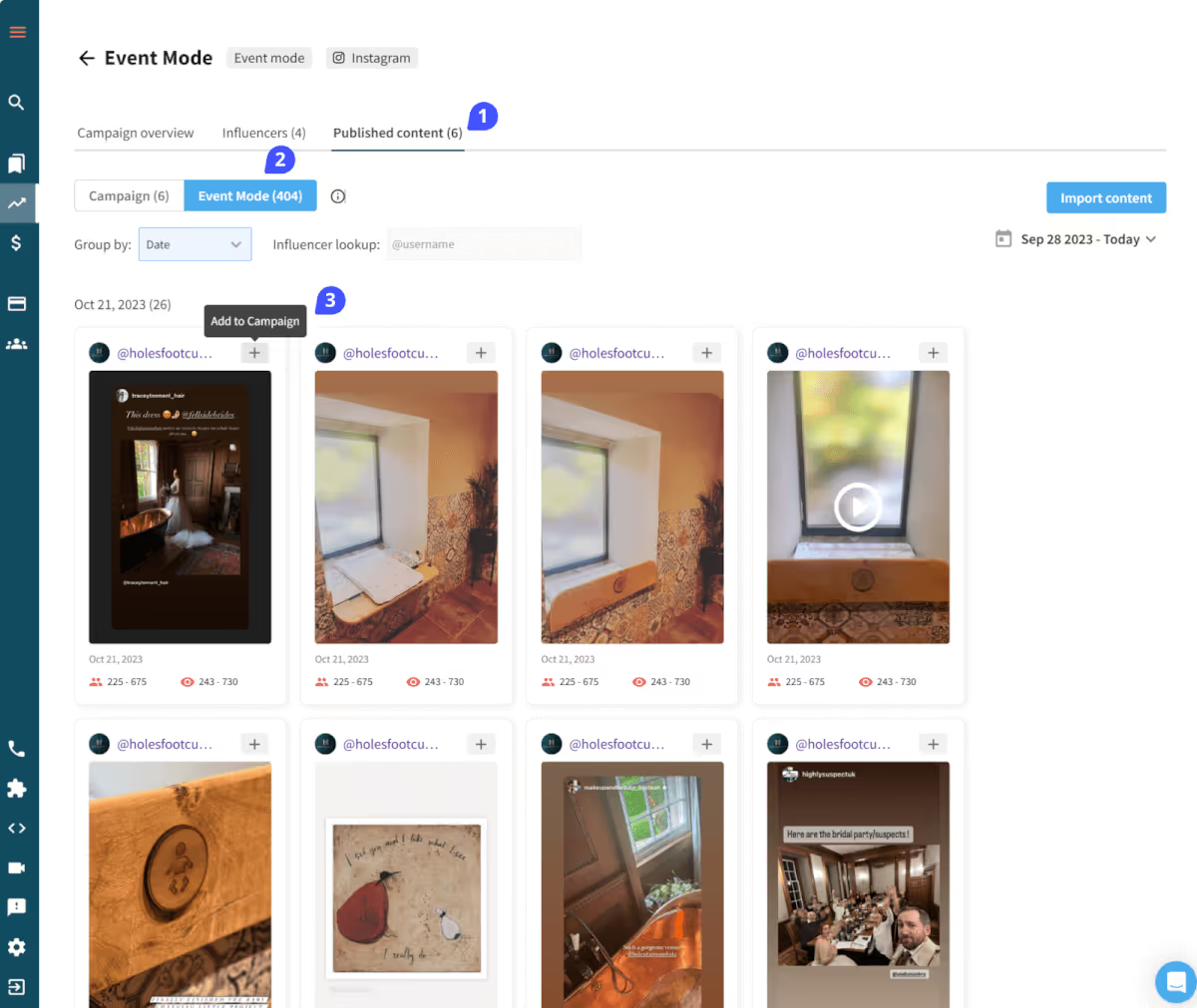
You can try Modash for free, no credit card needed.
There’s no one right way to plant a seed
Each company’s seeding efforts will differ depending on their industry, COGS, goals, and budget. But I hope the above examples have inspired you on what you can and can’t do with product seeding.
But remember: there’s no “one right way” to practice product seeding. You can get creative with it — which is the best part! Don’t emulate someone’s strategy if their objectives and constraints don’t match yours.
Looking for more real-life examples of influencer marketing campaigns done right? Subscribe to our newsletter, Return on Influence. It packs influencer marketing advice from pros and examples of IGC from brands like yours. See past issues and if you like what you see, sign up at no cost.




